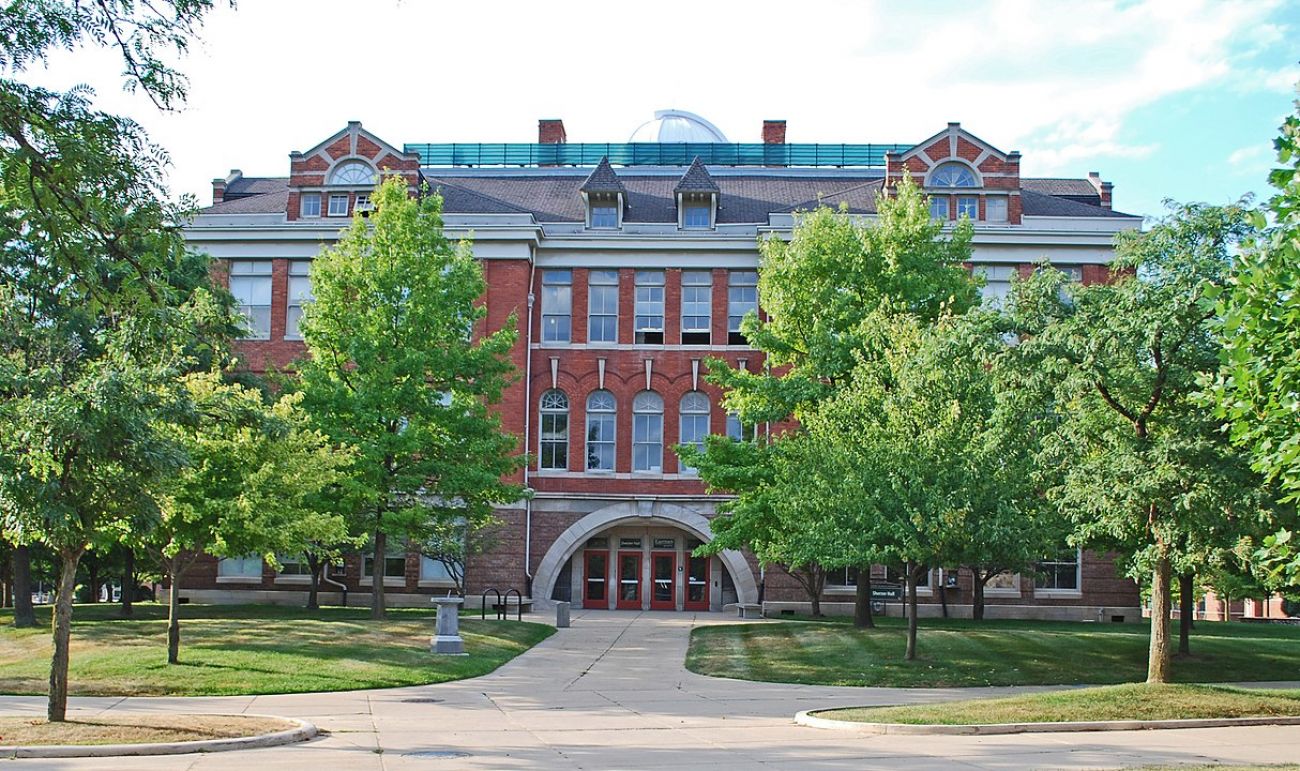No salad bars but face masks galore. Welcome to college amid coronavirus

At Eastern Michigan University, officials wonder if they’ll be able to find enough hand sanitizer. Saginaw Valley State is figuring out how to source tens of thousands of face masks.
Both public universities announced Wednesday that they plan to bring students back to campus in September for at least some face-to-face classes, though school officials acknowledged that campus life will look much different during a pandemic.
In a letter to students, staff and faculty Wednesday, Eastern Michigan said it was “planning for University operations to be held in person on campus this fall including, wherever possible, classroom instruction, housing, dining, and similar activities.”
The 19,000-student campus in Ypsilanti is the first public university in hard-hit southeast Michigan to proclaim its intention to mostly return to in-person classes. Oakland University plans to take a hybrid approach to the fall semester, with the majority of classes taught online, and classes that include hands-on labs held on campus, but with fewer students in class at a time.
Wayne State University in Detroit and the state’s largest public schools, Michigan State University and the University of Michigan, have yet to announce their plans for the fall.
“We are steadfast in the belief that with the help of our great health professionals, we will have graduate and undergraduate classes in the fall,” EMU President James Smith told Bridge Wednesday. “We’re comfortable with the thinking that we have now, that we can do this and maximize safety.”
Saginaw Valley State University announced its similar intention to return to in-person classes in the fall at its 8,500-student campus north of Saginaw.
“We are absolutely committed to providing quality instruction to our students and doing all that we can to ensure the safety of our entire campus community,” Saginaw Valley President Donald Bachand said in a statement on the college’s website. “We believe our small class sizes, our caring faculty and staff, and our modern housing and academic facilities provide us with opportunities to make the adjustments necessary for our ‘new normal,’ which includes bringing students back to campus safely this fall.”
- The latest: Michigan coronavirus map, curve, chart, updated COVID-19 news
- Gov. Whitmer extends Michigan coronavirus stay-at-home order to May 28
- Whitmer reopens Michigan from coronavirus in phases: What that means to you
Michigan’s public universities, private colleges and community colleges closed in-person classes in March and switched to remote learning to slow the spread of COVID-19, which has so far killed more than 4,500 Michigan residents.
With a vaccine unlikely by September, universities are wrestling with how to continue education while also avoiding putting students, faculty and staff in danger.
Until recently, universities had said they planned to hold off on decisions about the fall semester until at least June. But nine of the state’s 15 public universities have now announced their plans in the last two weeks, including three in 24 hours Tuesday and Wednesday.
The reason, said EMU’s Smith, is pressure from students who want to know what their fall will look like. “We’re getting that question consistently from students,” Smith said. “If we are indeed going to do this (have students return to campus before a vaccine is developed for COVID-19), it will take us several months to get there.”
Among the state’s public universities that have announced fall plans, it’s clear that college during a pandemic is going to look vastly different from past years.
Among the changes students should expect:
Face masks
While EMU and Saginaw Valley officials say they will follow state and federal guidance, both schools anticipate that students, staff and faculty will wear face masks on campus. Oakland University had earlier said face masks will be required on its campus.
“We are preparing for [requiring face masks],” EMU’s Smith said. “I believe that requirement will hold until we have a vaccination.”
Saginaw Valley spokesperson J.J. Boehm told Bridge that it’s possible hand-made masks will suffice on the SVSU campus, but the school is working to find and purchase tens of thousands of face masks. “Sourcing for those things is not as easy as we’d like right now,” Boehm said.
Smaller classes
The need to maintain social distancing to limit the potential spread of coronavirus will entail moving students apart in classrooms. Oakland and Eastern Michigan plan to utilize large lecture halls and ballrooms for classes so students can spread out.
EMU’s Smith said some classes may be half in-person, half-online. “If you have an English literature class with 24 students, 12 students may be in class on Tuesday, and the other 12 on Thursday,” Smith said. “On the days you’re not in class, you will attend the class online.”
Saginaw Valley, like Grand Valley State University that similarly announced a return to in-person classes in the fall, has small classes in a traditional year. The average class size is 23 students, with only 5 percent of class sections having more than 50 students. Those small classes will make it easier to implement social-distancing, Boehm said.
More online education
Despite announcements of the reopening of campuses, many students will have more classes online.
In some cases, that will be to limit the number of students in a classroom at one time, said EMU’s Smith. But there also will be situations where faculty do not want to return to face-to-face classes because they have health issues that put them more at risk of serious complications from coronavirus. Several schools have noted in their announcements that faculty and students who are uncomfortable returning to in-person education will have the option of continuing remote learning similar to how they finished their winter semesters after campuses closed.
At Saginaw Valley, “how much face-to-face [education will happen in the fall] is too early to say,” Boehm said. “It will be based, one, on the ability to social distance, and two, on the professor’s ability to teach in person.”
Dining hall changes
Salad bars are gone for now, Smith said. There also will be more “grab-and-go” options for students. EMU is considering adding “carryout orders,” in which students can call ahead for a burger and fries and tell workers what time they’ll pick it up.
Reimagining dorm life
Eastern Michigan and Central Michigan University, which also recently announced its plan to bring students back to its Mount Pleasant campus, both plan to spread students out in residence halls. CMU will place fewer students in each suite in its dorms, and Eastern is toying with giving residential students their own rooms, rather than bunking students together.
Both Central and Eastern currently have excess residential hall capacity, making the moves possible. EMU will reopen a shuttered dormitory to make room for more solo dorm occupants, Smith said.
“The granularity of the things we have to look at may surprise readers,” Smith said. “How many hand sanitizer stations do we need? How do you clean classrooms between classes? Do we need to designate up staircases and down staircases?
“It sounds easy to say we’ll operate differently, but it will take from now until August to do it right.”
Michigan Education Watch
Michigan Education Watch is made possible by generous financial support from:
Subscribe to Michigan Education Watch
See what new members are saying about why they donated to Bridge Michigan:
- “In order for this information to be accurate and unbiased it must be underwritten by its readers, not by special interests.” - Larry S.
- “Not many other media sources report on the topics Bridge does.” - Susan B.
- “Your journalism is outstanding and rare these days.” - Mark S.
If you want to ensure the future of nonpartisan, nonprofit Michigan journalism, please become a member today. You, too, will be asked why you donated and maybe we'll feature your quote next time!






